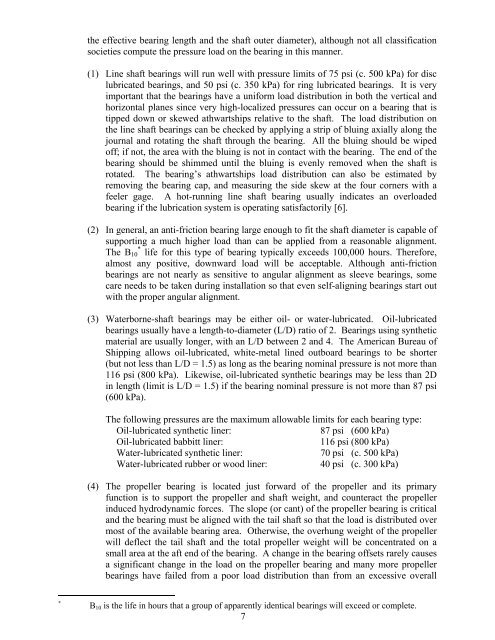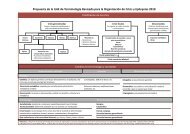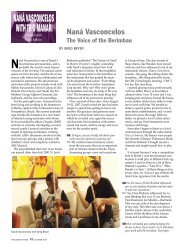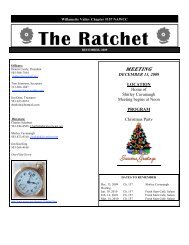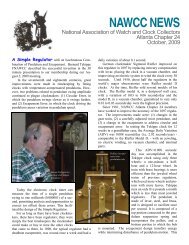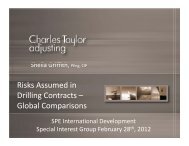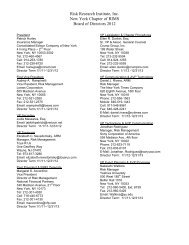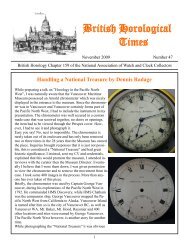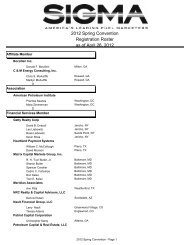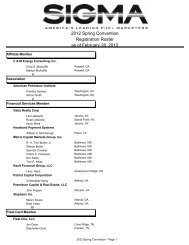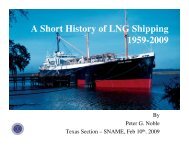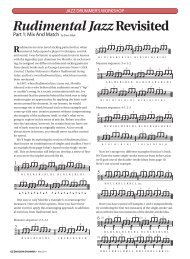Technical and Research Bulletin 3-51 - Amazon Web Services
Technical and Research Bulletin 3-51 - Amazon Web Services
Technical and Research Bulletin 3-51 - Amazon Web Services
You also want an ePaper? Increase the reach of your titles
YUMPU automatically turns print PDFs into web optimized ePapers that Google loves.
the effective bearing length <strong>and</strong> the shaft outer diameter), although not all classification<br />
societies compute the pressure load on the bearing in this manner.<br />
(1) Line shaft bearings will run well with pressure limits of 75 psi (c. 500 kPa) for disc<br />
lubricated bearings, <strong>and</strong> 50 psi (c. 350 kPa) for ring lubricated bearings. It is very<br />
important that the bearings have a uniform load distribution in both the vertical <strong>and</strong><br />
horizontal planes since very high-localized pressures can occur on a bearing that is<br />
tipped down or skewed athwartships relative to the shaft. The load distribution on<br />
the line shaft bearings can be checked by applying a strip of bluing axially along the<br />
journal <strong>and</strong> rotating the shaft through the bearing. All the bluing should be wiped<br />
off; if not, the area with the bluing is not in contact with the bearing. The end of the<br />
bearing should be shimmed until the bluing is evenly removed when the shaft is<br />
rotated. The bearing’s athwartships load distribution can also be estimated by<br />
removing the bearing cap, <strong>and</strong> measuring the side skew at the four corners with a<br />
feeler gage. A hot-running line shaft bearing usually indicates an overloaded<br />
bearing if the lubrication system is operating satisfactorily [6].<br />
(2) In general, an anti-friction bearing large enough to fit the shaft diameter is capable of<br />
supporting a much higher load than can be applied from a reasonable alignment.<br />
The B10 * life for this type of bearing typically exceeds 100,000 hours. Therefore,<br />
almost any positive, downward load will be acceptable. Although anti-friction<br />
bearings are not nearly as sensitive to angular alignment as sleeve bearings, some<br />
care needs to be taken during installation so that even self-aligning bearings start out<br />
with the proper angular alignment.<br />
(3) Waterborne-shaft bearings may be either oil- or water-lubricated. Oil-lubricated<br />
bearings usually have a length-to-diameter (L/D) ratio of 2. Bearings using synthetic<br />
material are usually longer, with an L/D between 2 <strong>and</strong> 4. The American Bureau of<br />
Shipping allows oil-lubricated, white-metal lined outboard bearings to be shorter<br />
(but not less than L/D = 1.5) as long as the bearing nominal pressure is not more than<br />
116 psi (800 kPa). Likewise, oil-lubricated synthetic bearings may be less than 2D<br />
in length (limit is L/D = 1.5) if the bearing nominal pressure is not more than 87 psi<br />
(600 kPa).<br />
The following pressures are the maximum allowable limits for each bearing type:<br />
Oil-lubricated synthetic liner: 87 psi (600 kPa)<br />
Oil-lubricated babbitt liner: 116 psi (800 kPa)<br />
Water-lubricated synthetic liner: 70 psi (c. 500 kPa)<br />
Water-lubricated rubber or wood liner: 40 psi (c. 300 kPa)<br />
(4) The propeller bearing is located just forward of the propeller <strong>and</strong> its primary<br />
function is to support the propeller <strong>and</strong> shaft weight, <strong>and</strong> counteract the propeller<br />
induced hydrodynamic forces. The slope (or cant) of the propeller bearing is critical<br />
<strong>and</strong> the bearing must be aligned with the tail shaft so that the load is distributed over<br />
most of the available bearing area. Otherwise, the overhung weight of the propeller<br />
will deflect the tail shaft <strong>and</strong> the total propeller weight will be concentrated on a<br />
small area at the aft end of the bearing. A change in the bearing offsets rarely causes<br />
a significant change in the load on the propeller bearing <strong>and</strong> many more propeller<br />
bearings have failed from a poor load distribution than from an excessive overall<br />
*<br />
B10 is the life in hours that a group of apparently identical bearings will exceed or complete.<br />
7


